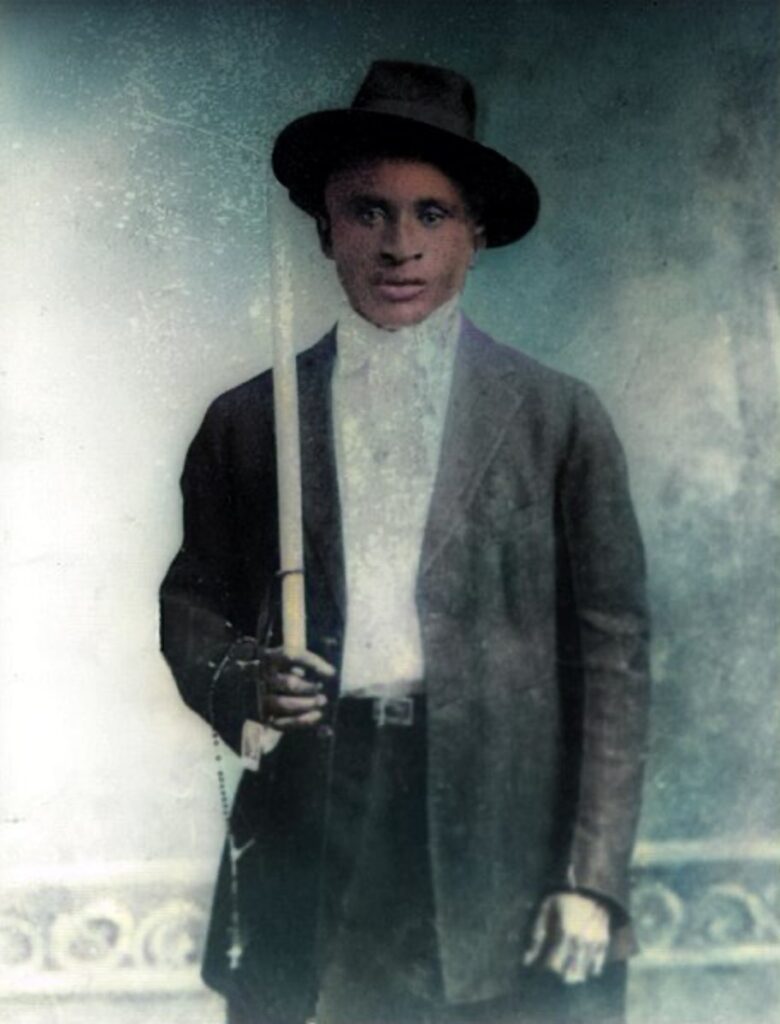Is Country Music Quintessentially American? Or White?
The phrase “quintessentially American” arises frequently with reference to country music. In Ken Burns’s 2019 Country Music documentary series and many other instances, it reiterates an established truism—but is there any truth to it? In what sense might country, long known as white music, be quintessentially American music?
Twentieth-century conventional wisdom held that commercial country—“hillbilly” music until midcentury—descended from British Isles sources. But some people knew a more complex story. Patrick Huber shows that nearly fifty Black musicians played on early hillbilly records from 1924–32. They knew country was not simply white music. Likewise Lesley Riddle and Rufus “Tee Tot” Payne, Black musicians who shaped country music via work with the Carter Family and Hank Williams, respectively. In the 1960s–70s Ray Charles, Tina Turner, and Bobby Womack, African American musicians who came up in the South with country music, heard the music as their own. Along with a small roster of Black artists in the country industry—including Stoney Edwards, Linda Martell, O. B. McClinton, and Charley Pride—these R&B and soul musicians created and performed country despite the industry’s frequent lack of support in a genre it has long constructed as white.
Commercial country music is now one hundred years old, and so is its reputed whiteness. In the 1920s the nascent U.S. music industry recorded multiracial working-class music in the Jim Crow South, and industry executives invented a pair of racialized categories for marketing it: “race” (later, R&B) and hillbilly (or “old-time”) music. These labels branded certain sounds as Black and others as white. A century later the categories remain strikingly segregated, and their perceived sonic and stylistic distinctions have been naturalized as human “racial differences.”

Amédé Ardoin (1898–1942) in confirmation garb circa 1912. He was a pioneering singer, songwriter, button accordion virtuoso, and father of Cajun music, a style marketed through the early record industry’s “hillbilly” category. Photographer unknown (Wikimedia Commons).
In constructing country as white music the industry not only obscured its important (ongoing) relations to Black music; it also nearly erased from memory the Black “frolic” tradition, southern string-band music that originated with enslaved African people. Fortunately, the music survived in the work of musicians such as the fiddler Joe Thompson and his banjoist cousin Odell, and in the twenty-first century it has been revived by bands such as the Ebony Hillbillies and the Carolina Chocolate Drops. Now, from a certain perspective, one could argue that there’s nothing more quintessentially American than the erasure of Black and other marginalized cultural influences and contributions that is exemplified in country music. But from another perspective, country music is not an apt example of quintessential Americanness—not when the music is understood as the expression of one narrow, Anglo-Celtic white slice of U.S. society. Quintessentially, American music is distinguished by rich cross-cultural exchange, even if, as the history of country (and other) music shows, dominant representations haven’t always recognized it.
But the stories we tell about country music, and American music, are changing. Recent writings have produced groundbreaking work on country music and African American presence; women, gender, and LGBTQ+ people; Indigenous people; and from diverse racial and sex-gender perspectives. The scholarly and journalistic conversation bears important ties to the current revolution in the music itself, an explosion of LGBTQ+, Latine, Indigenous, of color, and, especially, Black country musical activity. Emergent by the late 2010s, this movement has reached new levels of visibility and vigor since the COVID-19 pandemic, when artists, audiences, organizers, and commentators came together online and created new spaces for music and community.
Black sounds and voices in country music have long been “hidden in the mix.” But other voices have been hidden there, too, as the history of the steel guitar illustrates. The weeping and wailing of pedal steel are so particular to country music that Shania Twain’s multi-version album Up! excluded the instrument from all but the country mix. Its flagrant twang readily inspires the “anything but country” reaction, a declaration of musical taste that functions as a gesture of social exclusion of the low-educated whites who are stereotypically associated with country music.
Slide steel guitar entered hillbilly music in the 1920s via the Hawaiian music craze, at the same moment the Delta blues slide guitar style made its debut on race records.
Most blues scholars have traced the origins of that style to West Africa centuries ago, but John Troutman argues that the first “African American ‘blues slide’ guitarists actually played in the ‘Hawaiian style’” and called it that. Troutman shows that Indigenous Hawaiian musicians toured the Deep South extensively in the 1880s–1910s, playing and sharing “colored” spaces with Mexican, Native American, and African American musicians. He emphasizes that U.S. music history is not dichotomously Black and white but “Technicolor,” with Indigenous people occupying center stage.
Indigenous people occupy center stage in some recent country music scholarship. Kristina Jacobsen’s study of Navajo country music engagements rejects the notion, argued by Geoff Mann, that country music necessarily calls people to their whiteness: it “calls people with equal force to working-class Indigenous identities.” Writing on Indigenous popular musicians in Canada, Ryan Shuvera notes that “cross-cultural exchange lies at the heart of genres that have largely been seen as music of and for white people,” and Indigenous contributions have gone unrecognized.
According to Troutman’s research, Indigenous Hawaiians’ music gave rise to blues slide guitar and country steel guitar, iconic instrumental practices that have defined what Blackness and whiteness (supposedly) sound like. Troutman further suggests that Hawaiian guitar music itself may have originated in the 1830s with vaqueros (cowboys) from the Mexican state of California who came to Hawai’i with guitars, possibly the first to arrive in the islands.
This scenario suggests the possibility of Mexican influence in the prehistory of American country music. Mexican influences and engagements in country music are the focus of my current research—which includes variously gendered vaqueros. In my fieldwork, Mexican American country fans spoke of the music’s crucial connections to the Mexican figure of the cowboy, working-class rancho culture, the former Mexican territories that constitute the American Southwest, and—in country’s patriotic songs—their love for both their American and Mexican cultures and identities. Citing these connections and a view that country music gives voice to “Mexican values” (family, faith, hard work), my interlocutors attested not that country music offers belonging—as, say, a vehicle for immigrants’ U.S. acculturation. Rather, they emphasized, country music belongs to Mexican Americans, and their love for it is inevitable. Isaías, a Texas focus group participant, described the Rio Grande Valley as “essentially the mixing of two worlds, the Mexican and American,” and concluded, “Country brings those two cultures together in a way that no other music genre can.”

McAllen, Texas, in the Rio Grande Valley, where the author carried out fieldwork with Mexican American country music lovers. Photo by the author.
The sense of country music as one’s own culture is shared by members of every group discussed here. Thus, to speak of country as white music today is not just a continuation of long-standing erasures; it erases anew. Country music is quintessentially American music, bearing audible traces of exchange among diverse groups in U.S. society. In our divided moment it’s music that speaks to a stereotype-shatteringly broad audience through themes of love of family, friends, community, and country; freedom and fun; and what Steve Goodson called “hillbilly humanism,” an ethos insisting that each person is worthy and none of us can judge another. At this pivotal point in our history, the music industry must recognize the rich diversity of country music’s past and present and embrace its potential for a more equitable and inclusive future.
A version of the essay is forthcoming in a special issue of American Music that will celebrate the journal’s fortieth anniversary.



